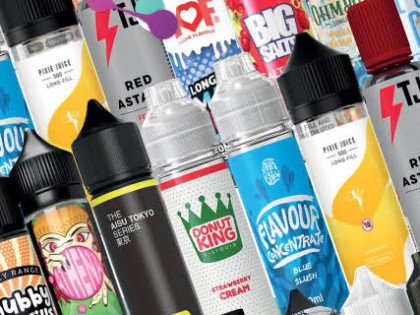University of Waterloo’s David Hammond, Vicki Rynard, and Jessica Reid looked at data sets covering the years 2017, 2018, and 2019, because “there are concerns over increases in vaping among North American youths”.
CBC reported the survey of 16 to 19 year-olds finding: “vaping in the previous month had more than doubled to 17.8 per cent from 8.4 per cent in 2017. Those who said they had vaped in the past week rose to 12.3 per cent in 2019 from 5.2 per cent in 2017. Those who reported using e-cigarettes more than 20 times in the previous month jumped to 5.7 per cent from 1.8 per cent.”
It reported someone from the Canadian Cancer Society saying: “That is stunning, and there needs to be pressing action by federal and provincial governments to reduce youth vaping through a series of measures.”
The publishing of the Research Letter in anti-vape JAMA Pediatrics was accompanied with a predictably shrill call for limits and bans to be imposed on Canadian eliquids. A Health Canada spokesperson said: “Health Canada is considering taking further action to reduce the appeal of these products to young Canadians, including further restricting nicotine concentration and flavours, as well as other possible measures described in the April 2019 consultation.”
Momentum has gathered to impose a limit of 20mg/ml on nicotine containing juices, something that (oddly) has been supported by Dashvapes – “Canada’s leading source for e-cigarette news”.
Writing on their Twitter account, Dashvapes said: “We definitely care. Pick 1:
- Full flavour ban
- Full vaping ban
- Full open-system vapor ban
- Limit of 20mg nicotine
There are some people who high-nicotine works very well for, but lowering the nicotine and increasing the power solves that issue for those users.”
To which, harm reduction advocate Amelia Howard responded: “Sorry but **** your false dilemma. You're putting consumers lives at risk. It disgusts me … No one with half a brain supports this.”
If sectors of the industry support a restriction on nicotine content they may as well say goodbye to flavours and the possibility of equipment restrictions at the same time, as has happened in California.
The hysteria drove Cynthia Callard, Physicians for a Smoke-Free Canada, to add her tuppence-worth: “Vaping adds to the problems of smoking; it does not replace it.”
Unfortunately for Callard, the study says precisely the opposite: “Young people who reported ever have smoked decreased to 7.4% from 11.9%, (38% drop) while those who had smoked in the past month dropped to 3.8% from 6.7% (43% drop).”
Not only that, the data clearly shows there is negligible uptake from non-smokers – so the impact of increased vaping is driving teens away from the more dangerous tobacco alternative, taking their tables at face value.
Should legislators choose to bow to the zealotry, they would do well to bear in mind a study by Drs Farsalinos, Poulas, and Voudris. They showed that when nicotine strength is reduced compensatory behaviours occur and users increase power settings and vape more frequently.
Related:
- “Changes in Prevalence of Vaping Among Youths in the United States, Canada, and England from 2017 to 2019” by Hammond, Rynard, and Reid – [link]
- “Changes in Puffing Topography and Nicotine Consumption Depending on the Power Setting of Electronic Cigarettes” by Farsalinos, Poulas, and Voudris – [link]
- “Vaping among Canadian teens doubles in 2 years, new research shows”, CBC – [link]
Photo Credit:
Ban image by mohamed Hassan from Pixabay
Flag image by Pete Linforth from Pixabay
Dave Cross
Journalist at POTVDave is a freelance writer; with articles on music, motorbikes, football, pop-science, vaping and tobacco harm reduction in Sounds, Melody Maker, UBG, AWoL, Bike, When Saturday Comes, Vape News Magazine, and syndicated across the Johnston Press group. He was published in an anthology of “Greatest Football Writing”, but still believes this was a mistake. Dave contributes sketches to comedy shows and used to co-host a radio sketch show. He’s worked with numerous start-ups to develop content for their websites.
Join the discussion
Harm Reduction For The Rich
The United Kingdom risks becoming a harm reduction country only for the wealthy, according to Michael Landl of the World Vapers’ Alliance
Longfills as an Alternative to Disposables
The disposable vape ban will impact many people, but there’s no reason to be concerned… Grab yourself a pod kit and a Longfill and you’ll be back to vaping the way you want to, just in a cheaper, more environmentally friendly and legal way.
COP10 is a Threat to Safer Nicotine Products
The EU obscures its position on low-risk alternatives to smoking before the WHO COP10 conference in Panama, starting Monday
Nicotine Is Not A Culprit
Planet of the Vapes has always encouraged smokers to use the quit product that works best for them, and snus is a product that seems to be unfairly blocked because it contains nicotine








-listing400.jpg)


